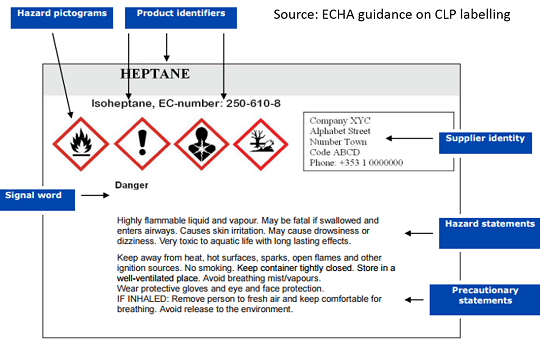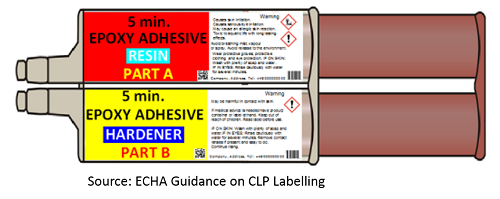GHS and Consumer Products
Little Pro on 2016-11-08
While GHS has been widely adopted for hazardous chemicals at workplace, it is not clear whether GHS has been adopted for consumer products or not in many countries. Unlike workplace chemicals, chemical consumer products such as glues, paints, air fresheners, cleaning products, bottled fuel additives are sold to consumers directly and label becomes the only way to communicate hazard information. In this article, we have analyzed how GHS may impact consumer product labeling and summarized the current situation of GHS adoption in consumer product sector.
GHS and Consumer Products
GHS uses hazard class and hazard category to describe the nature and severity of the hazard of a chemical product. There are currently 29 hazard classes in GHS, among which the following hazard classes are commonly related to chemical consumer products.
- Flammability;
- Acute Toxicity;
- Skin Corrosion/Irritation;
- Serious Eye Damage/Eye Irritation;
- Skin/Dermal Sensitization;
- Acute and Chronic Aquatic Hazards.
After a chemical has been classified using GHS classification criteria, a typical GHS label can be prepared with the following basic elements to communicate hazard information:
- Product identifier: Chemical identities of a substance or hazardous ingredients in a mixture;
- Supplier identification: The name, address and telephone number of a supplier;
- Signal word: Danger or Warning;
- Hazard pictogram: conveying different types of chemical hazards;
- Hazard statements: standardized and assigned phrases that describe the hazard(s) as determined by hazard classification;
- Precautionary statements: standardized phrases that describe measures to minimize or prevent adverse effects;
An example of a typical GHS label can be found below. It can be easily modified for consumer product label use by adding more non-obligatory information such as net quantity, instructions for use, product feature, expiration date, barcode, etc.

Please note that
- Since chemical consumer products are usually supplied in small packages, a label may not be big enough to include all GHS relevant info. Please read GHS label for small containers.
- GHS labelling is usually hazard-based. However, UN GHS does allow risk-based labelling for consumer products in which case certain chronic health hazards can be excluded from labelling if their risks can be excluded based on risk assessment.
Adoption of GHS for Consumer Products in EU
- Has adopted GHS for chemical consumer products via CLP Regulation (EC Regulation on Classification, Labelling and Packaging of Substances and Mixtures, EC 1272/2008);
- Additional labelling info may be required for products sold to the public: net quantity, "keep out of reach of children", etc.
- A sample label for a two-component adhesive sold to consumers: Please see the picture given below.
- Source: ECHA Guidance on CLP Classification and Labelling;

Adoption of GHS for Consumer Products in USA
- Has not adopted GHS for consumer products yet.
- Only hazardous chemicals used in the workplace require labeling under the new US Occupational Safety and Hazard Administration (OSHA) Hazard Communication Standard.
- Please note that consumer use does not include professional use.
- Source: OSHA HCS FAQ.
Adoption of GHS for Consumer Products in Canada
- Has not adopted GHS for consumer products yet.
- Aligned with US.
- Source: Canada WHIMS 2015 FAQ
Adoption of GHS for Consumer Products in China
- Consumer product is mentioned in MIIT's GHS implementation guide. Technically speaking, GHS is adopted for consumer products in China.
- The Standard Administration Committe is preparing a separate standard called "risk-based GHS labelling of consumer product".
- Source: MIIT GHS implementation guide (2013)
Adoption of GHS for Consumer Products in Japan
- GHS labelling is adopted for consumer products on a voluntary basis.
- With consultation with METI, Japan Soap and Detergent Association (JSDA) voluntarily developed a GHS guidance document for consumer cleaning products labelling. Risk-based labelling is taken into account.
- Source: APEC Chemical Dialogue on Chemical Consumer Products
Adoption of GHS for Consumer Products in Australia
- Has mainly adopted GHS for workplace hazardous chemicals.
- Since the boundary between workplace chemicals and consumer products is not always clear, regulators have given the industry the option to choose workplace labelling and consumer products labelling depending on marketing channels and end uses.
- Source: APEC Chemical Dialogue on Chemical Consumer Products
Advanced GHS Readings
- Global GHS Label Size Requirement
- Global GHS Label Requirement for Small Containers
- GHS and Pesticides
- GHS Classification List
- GHS and Confidential Business Info
- List of GHS Resources and Regulations
- Comparing GHS Builing Blocks in EU, USA, China and Japan
- Correlations between TDG and GHS
- When Should You Update Your SDSs
Having Questions?
We do not provide consultancy services. If you have questions or need any help, please contact our sponsor. You may also find an expert in CSP business directory below. If you are a consultant, you may get yourself listed in CSP business directory (free) or sponsor this page to leave your contact info on this page..

Tags: Topics - GHS, GHS Basics and Tutorials